Linux on a Macbook Pro, Window managers, and ricing
This past weekend, I started working on my first rice on my Arch Linux desktop. Since moving to Arch back in May, I had always wanted a system designed to my own spec. My first window manager was awesomeWM, which I came to enjoy quite a bit. I ended up using a default configuration from this repository. Namely, I was using the Multicolor theme with some slight changes I made to it.
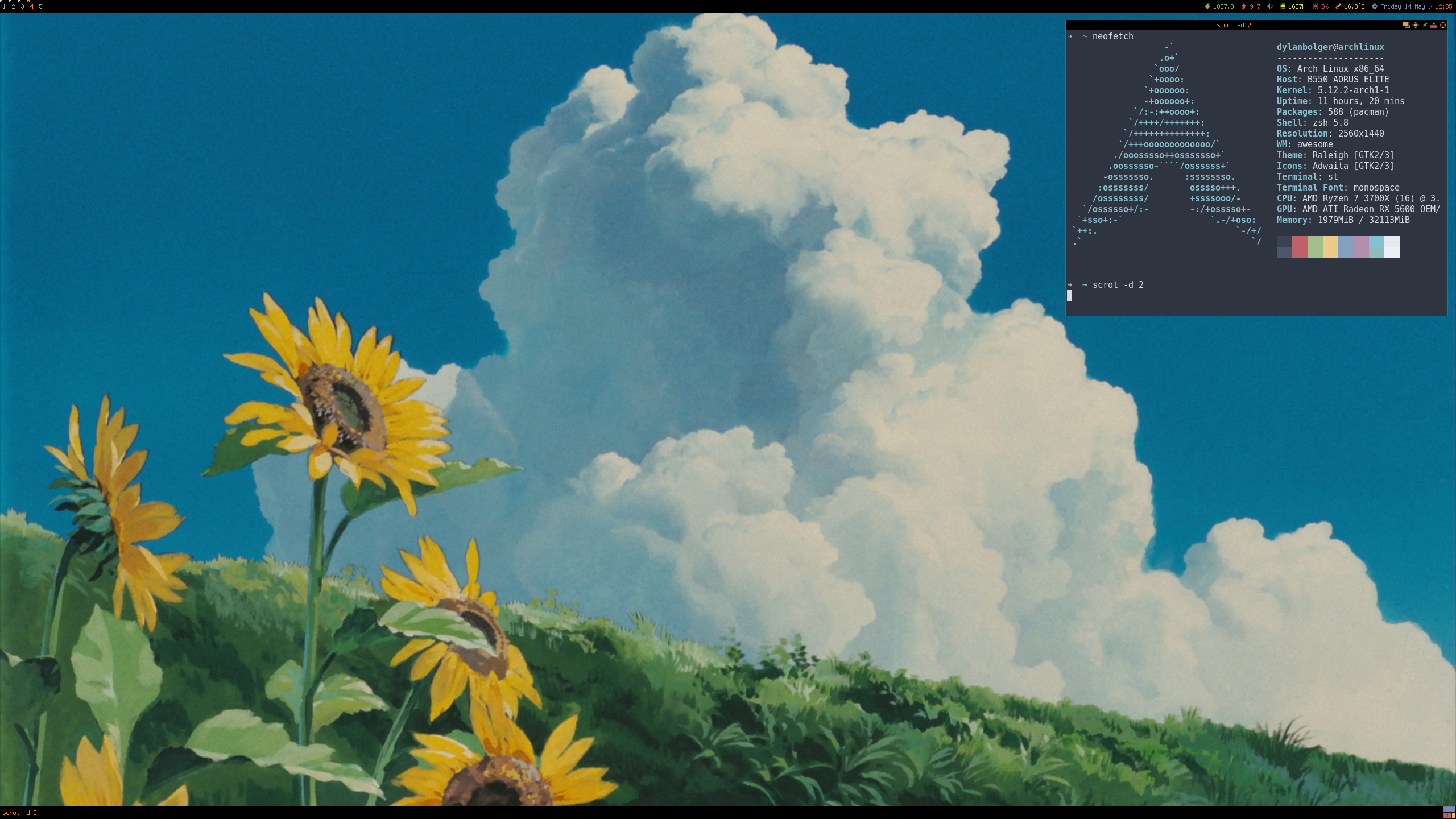
Making a rice always looked like a really involving task in my head. I imagined dedicating time into creating a color scheme, making a cool status/window bar, adding custom fonts, and spec’ing out all of these configs would take way more time than I could ever dedicate.
Eventually like everything in this world I got tired of my awesomeWM configuration.
I also had my Macbook Pro at the time which was starting to decline in performance in an outstanding rate. It’s a MacBookPro11,1 model, and the 7 years was starting to clearly show with each new OS update. Big Sur ran like big garbage. Catalina was much more usable. Mojave even more so. However, I didn’t want to live on an OS version that was that dated without any of the latest features. Having the latest features was always something I loved about macOS, up until May of this year I was running Hackintosh on my desktop. The weird Control Center button in the status bar on macOS Big Sur big sucked. Just let me remove the stupid button so I can use the normal volume controls and not have this Control Center button I never use sitting here.
On my Macbook, I didn’t want to move to something like Arch on my desktop (spoiler: my mind of course later changed) because I wanted some sort of GUI that was still clicky and functional and wasn’t just all command-line-based (for the most part). I decided to give Manjaro Linux a shot and threw it on the Macbook.
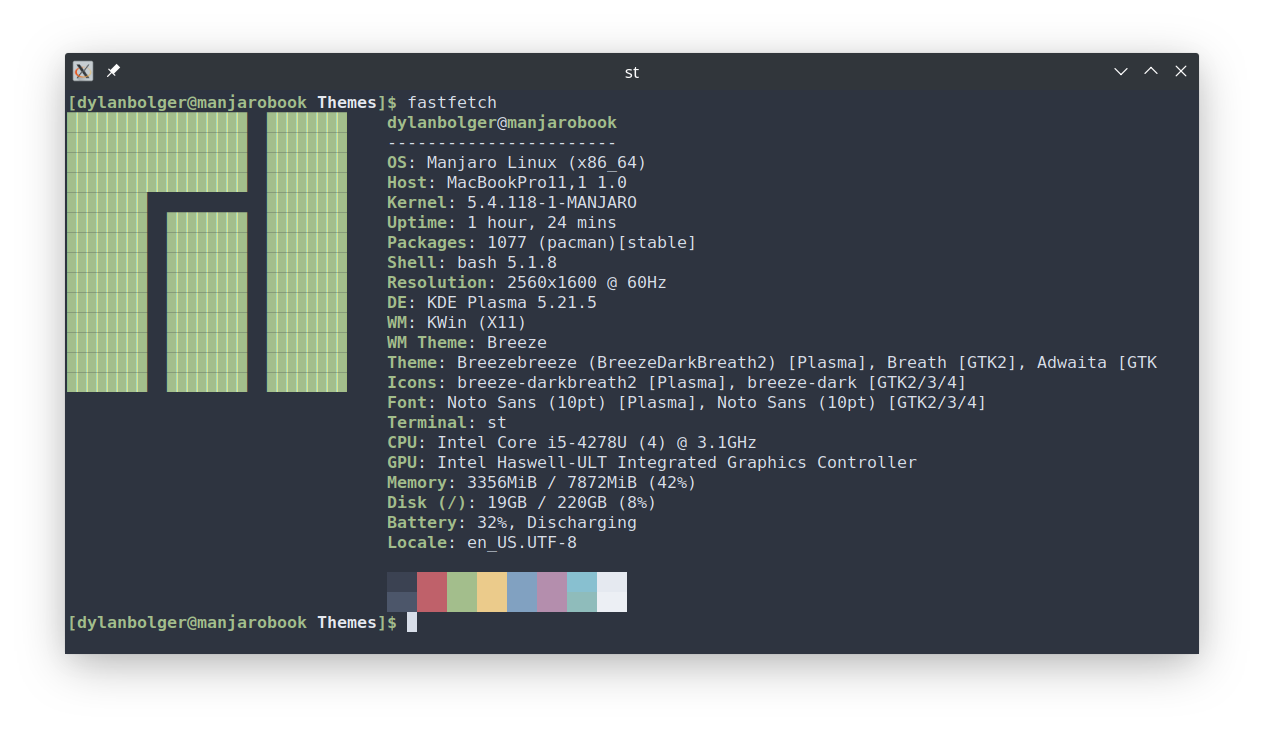
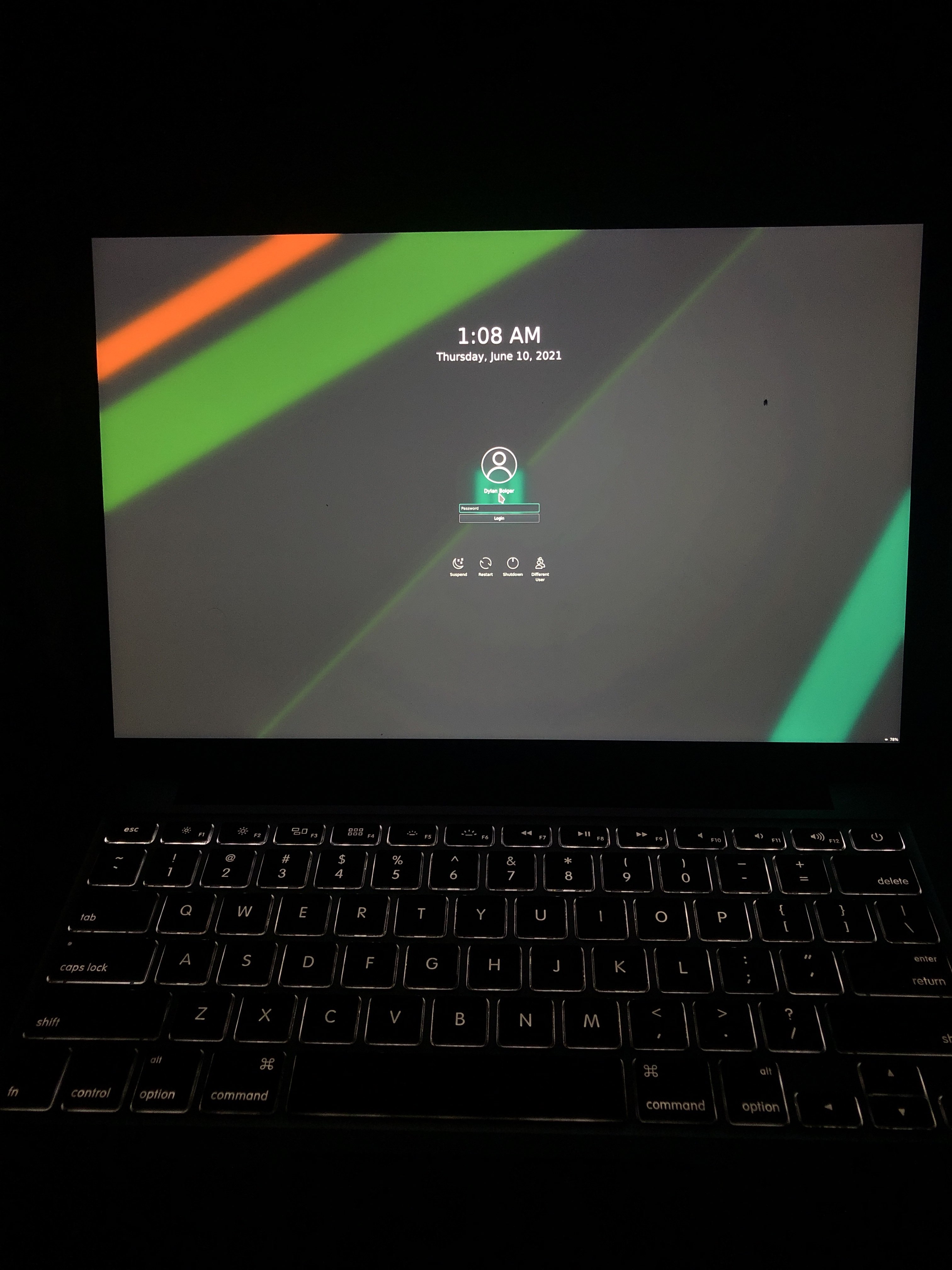
Don’t mind the passerby on the screen.
Manjaro was a pretty cool OS to run. I enjoyed it for what it was but it had its quirks - and the amount of UI things to do was a bit overwhelming. Especially the Settings app. There were too many settings for me to understand and it felt like too much for a system.
Eventually it was time to start settling with my favorite OS on my Macbook Pro and use something I could customize to my liking. I started to do my Arch install on my Macbook around July to August. Setting up wireless internet was one of the most treacherous tasks I’ve ever done on a computer. I also had a strange issue where my keyboard would only work when I was booted into the archiso from the USB stick and didn’t work on when booting my Arch install from systemd-boot on the computer’s SSD. Eventually I did a complete reinstall which seemed to alleviate the issue. I’m not sure what I did to get Wi-Fi working in the end. For awhile I was using a USB Wi-Fi dongle and connecting to my router using WPS. I will give kudos to the team developing Manjaro for getting Wi-Fi working natively on install. It had a few quirks like the internet needing a reconnect after it auto-connected on boot, but other than that it worked great.
Starting in August, I moved to a new position at my company. I moved to a Junior Software Developer after graduating the internship program I took that I mentioned during my last blog. The day I heard I got to use Linux on my work laptop might be one of the best days of my life. After using Windows 10 for the past 3 months to do my daily work, being moved to my daily OS was what I loved to hear.
Currently my work laptop uses KDE Neon, which is overall a pretty cool OS. Personally I don’t care too much for Debian but I do like how well KDE Neon operates.
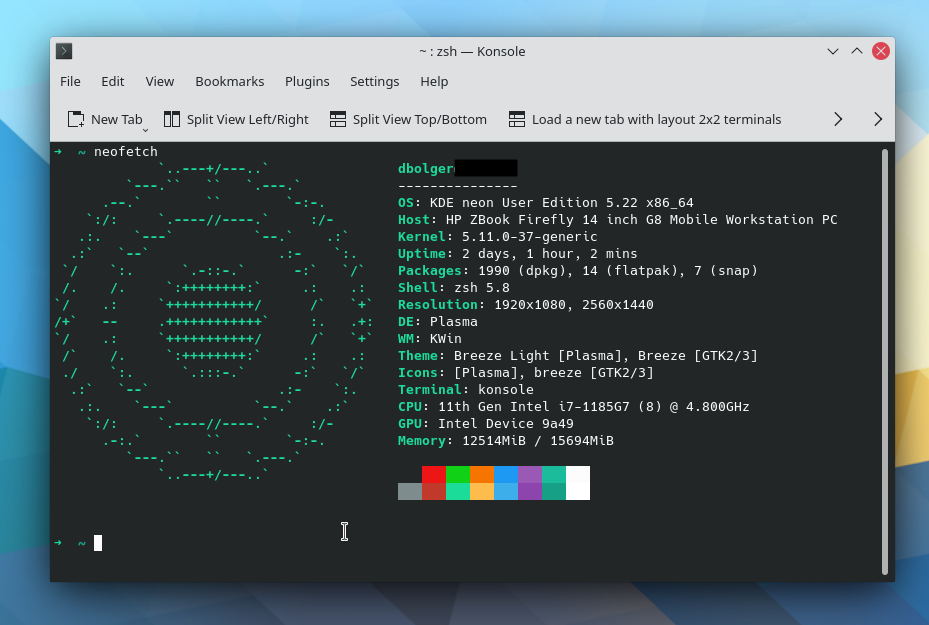
I forgot to mention the switch from awesomeWM to SwayWM on my desktop. I was looking for something that was more tiling and less floating-window based. I started looking for an alternative and was found by Sway. I was intrigued when I saw it used Wayland. awesomeWM is an X window manager system based window manager. I went ahead and set up my Sway configuration to a rice made by a user in the r/unixporn Discord channel. Here’s a screenshot of what I went off of and made some minor changes to my liking to:
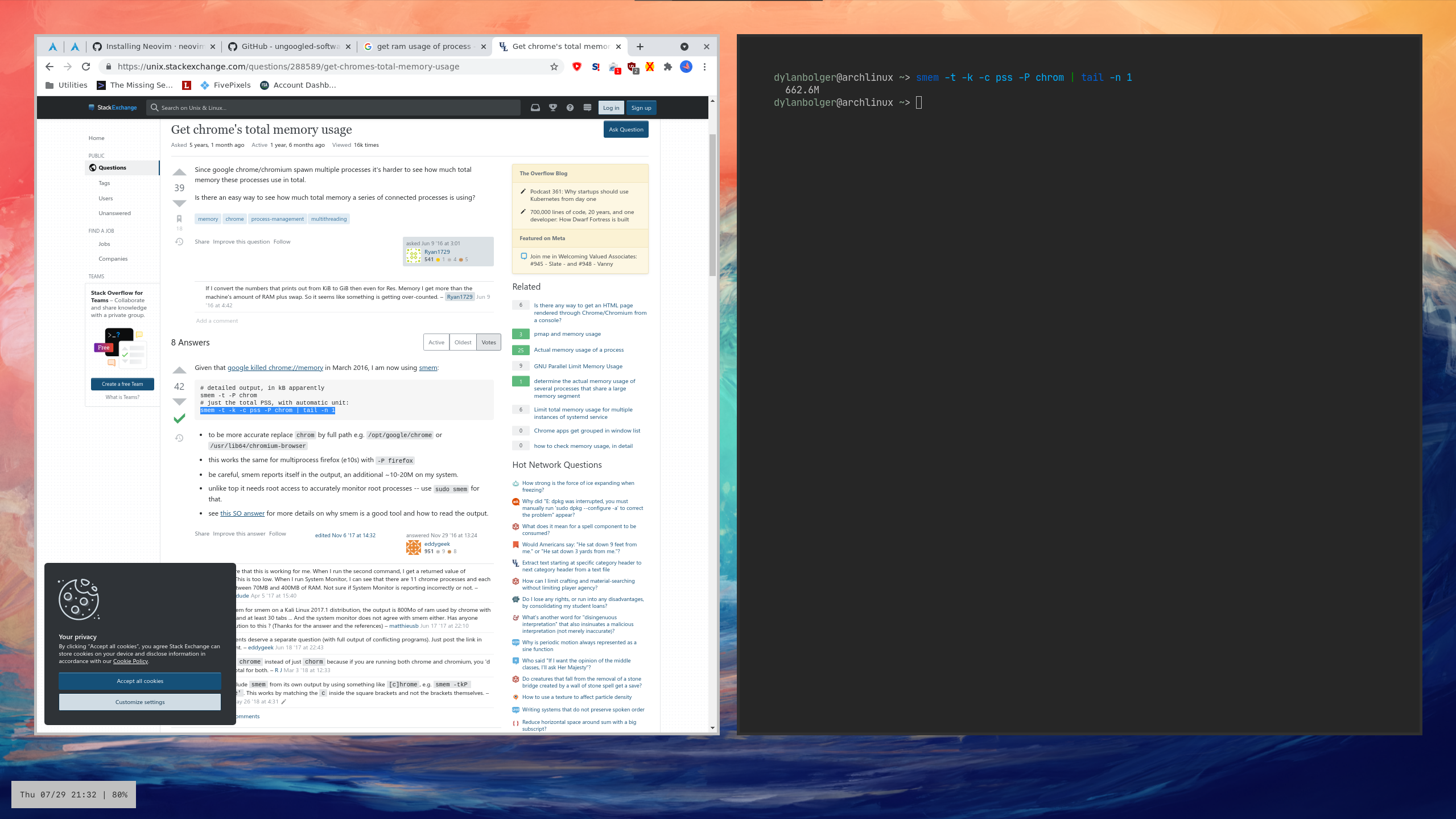
Checking how much of my memory is being used by chromium.
Once again, this rice did me great and is my longest running one I had on my system. And again, after some time of seeing the exact same interface you get kind of bored with it and want to see some change.
Which leads me to my current rice. This, once again came from the r/unixporn subreddit this time and has been modified to my specification.
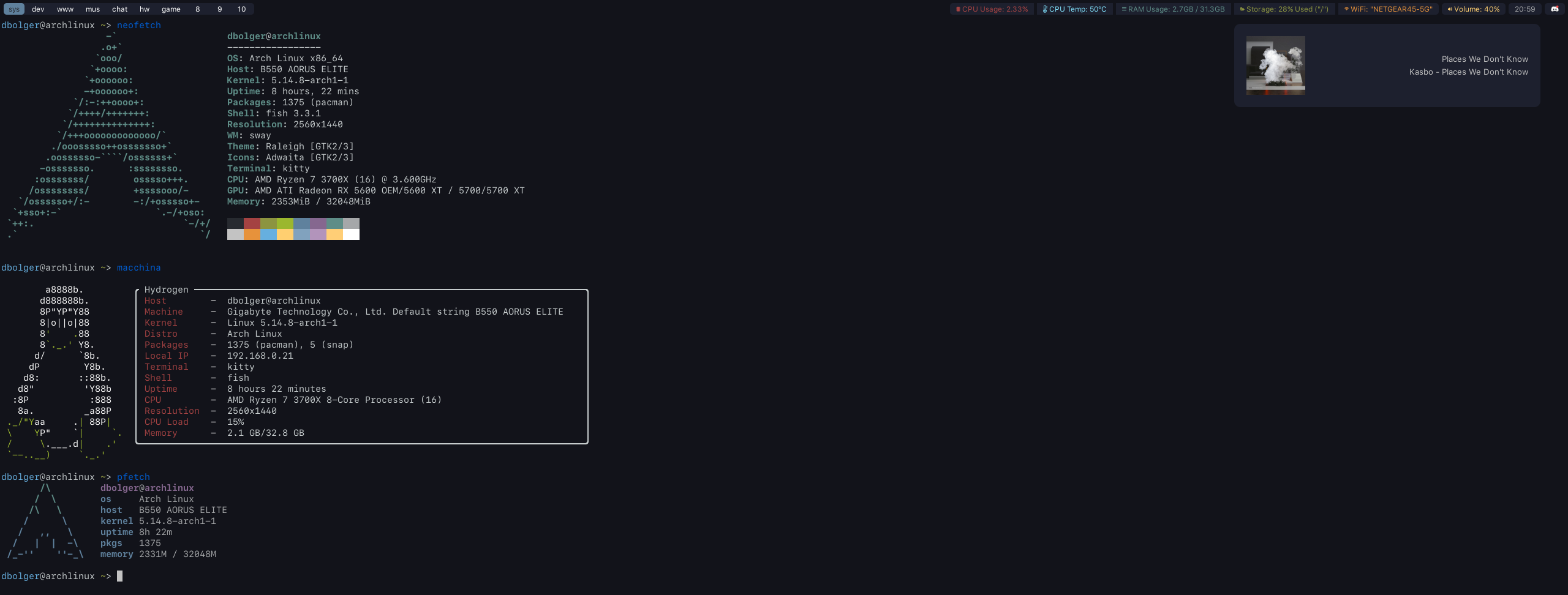
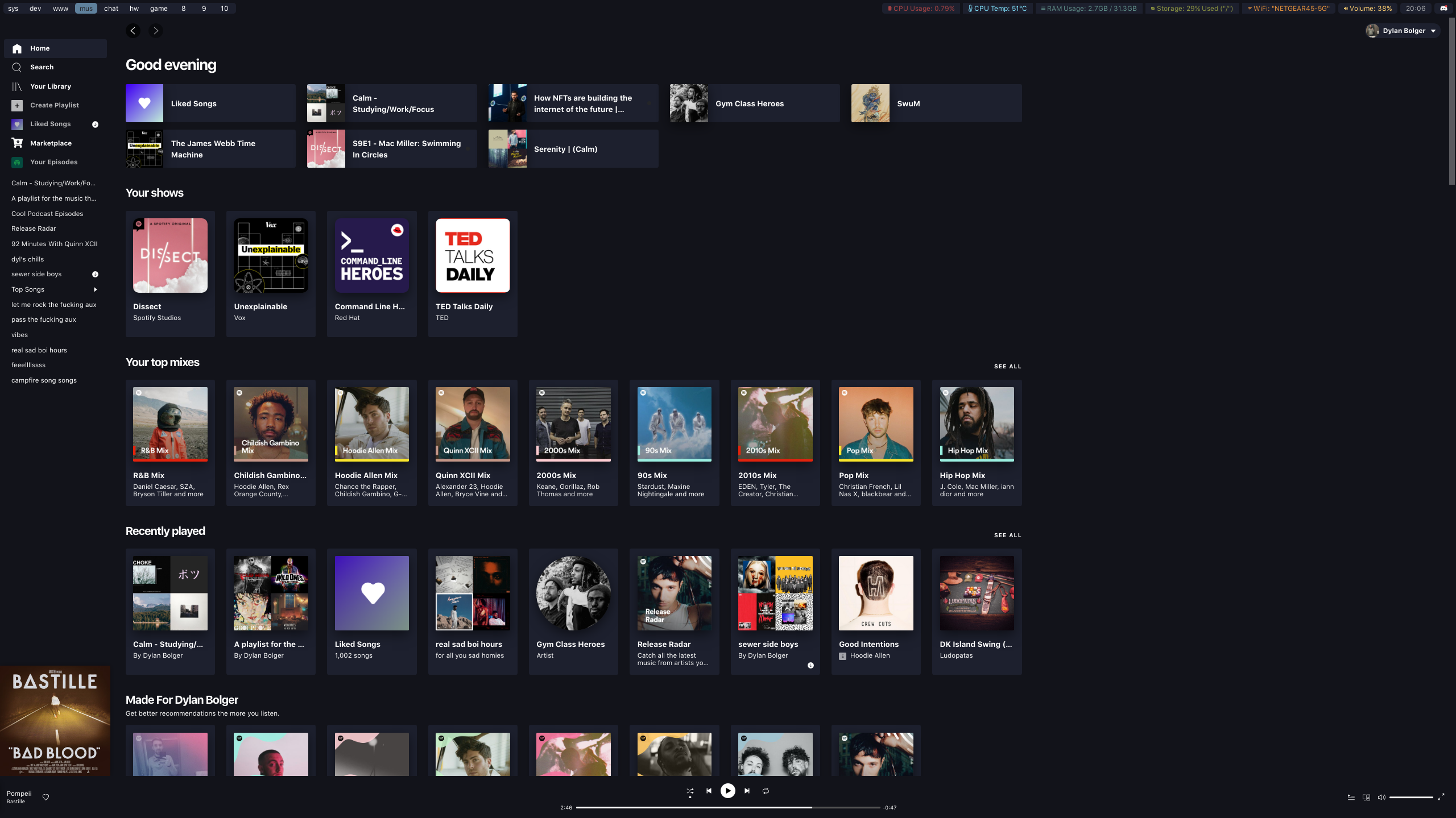
Spotify decked out to match my top bar theme. I tried to make it look like the application was fluid with the top bar (which I think turned out really good)
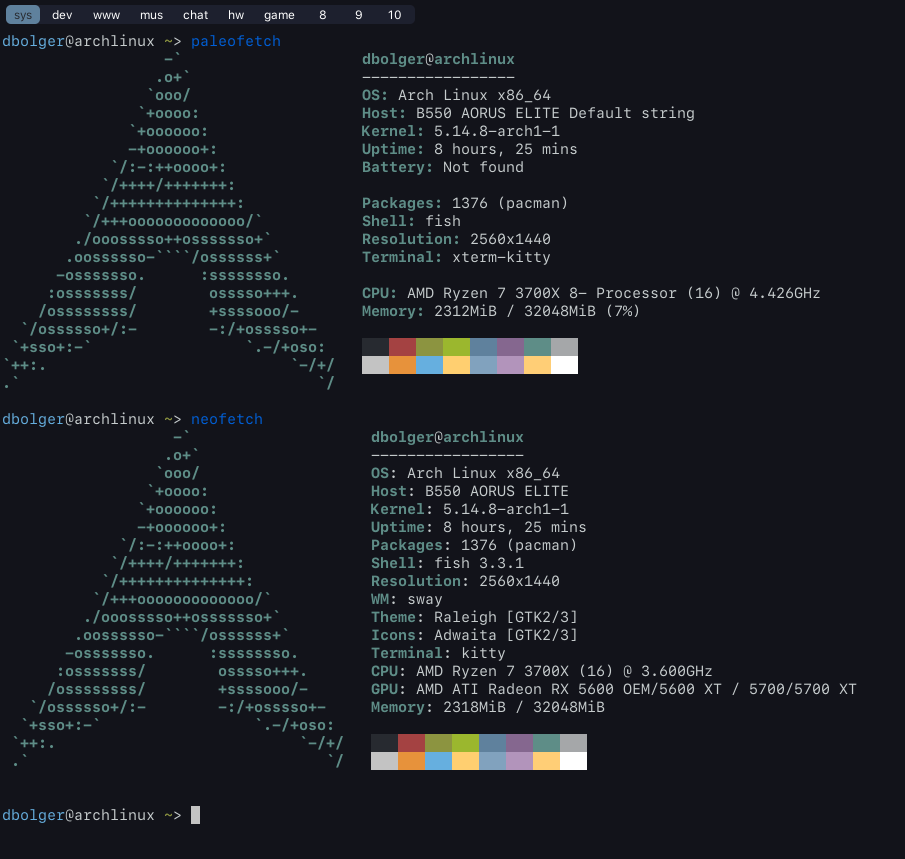
I think my terminal colors could use a bit of improvement.
So that’s the rice up to this point. I’ve had the question raised to me in a Discord channel I run for themeing Spotify (Spicetify, if you’re curious). One user asked, “Where do you get started with a rice?”
Out of the multiple rices I’ve worked on and used, there’s been a distinct repetition between all of them.
1) The theme was pulled from another source. 2) I modified the theme to my extent.
Of course, all credits where they’re due, they’re linked below at the bottom of this blog. The point I’m making is that making a rice is a bit difficult in a way. One problem I had was I would see all of these themes and never find anything that exactly matched what I wanted. I had a vision of what I wanted but it never matched what I saw on any subreddit or any GitHub repo. Anytime I’d find something close I’d want to change things about it to make it my own (even if they were subtle changes). I think that’s part of the point to ricing. Trying to find the “perfect” rice to match your system is a bit unrealistic I’ve recognized in hindsight. I think part of the point of ricing is to take inspiration from others on what you want and piece together the rice you want on your system. You might feel better about one rice more than another you create. I look back on my first SwayWM rice and comparing it to my latest feels great to see what changes I’ve made, especially with my mods to other applications to make it match the theme.
Ricing isn’t as difficult as it seems. It really just takes some time. I dedicated about half of my last weekend towards this most recent rice. Some minor changes might be as simple as adding new keybinds to a configuration or just changing how the status bar icons fit together. In my case, if you compare the original rice to mine I really haven’t changed much. I did spend some time changing the order and how the icons are laid out in the top bar. The design orders all of the system-related icons together and organizes them together so they aren’t all spread out. I’ve also removed the battery icon from mine as it doesn’t apply to my system (being a desktop and all).
So to sum up about ricing; I think that ricing is what you make of it. You can dedicate a lot of time to it or very little. It all depends on how deep you want your system to go. I don’t spend as much time on my computer as often now so I definitely don’t find any reason to invest a huge amount of time to a rice I’m making. Regardless of the time you spend on it, make yourself comfortable with your rice - it’s your desktop and it’s your creativity that you’ll see each day you boot your PC. If you start getting bored of it, feel free to move forward and change it up. Try out new theming techniques, new tools or window managers, or really just anything that makes your desktop behave differently if you want.
Sources to themes I’ve used:
awesome-copycats: Multicolor - Thank you contributors!
sway-dots - Thank you coodos!
dotfiles - Thank you petrolblue!